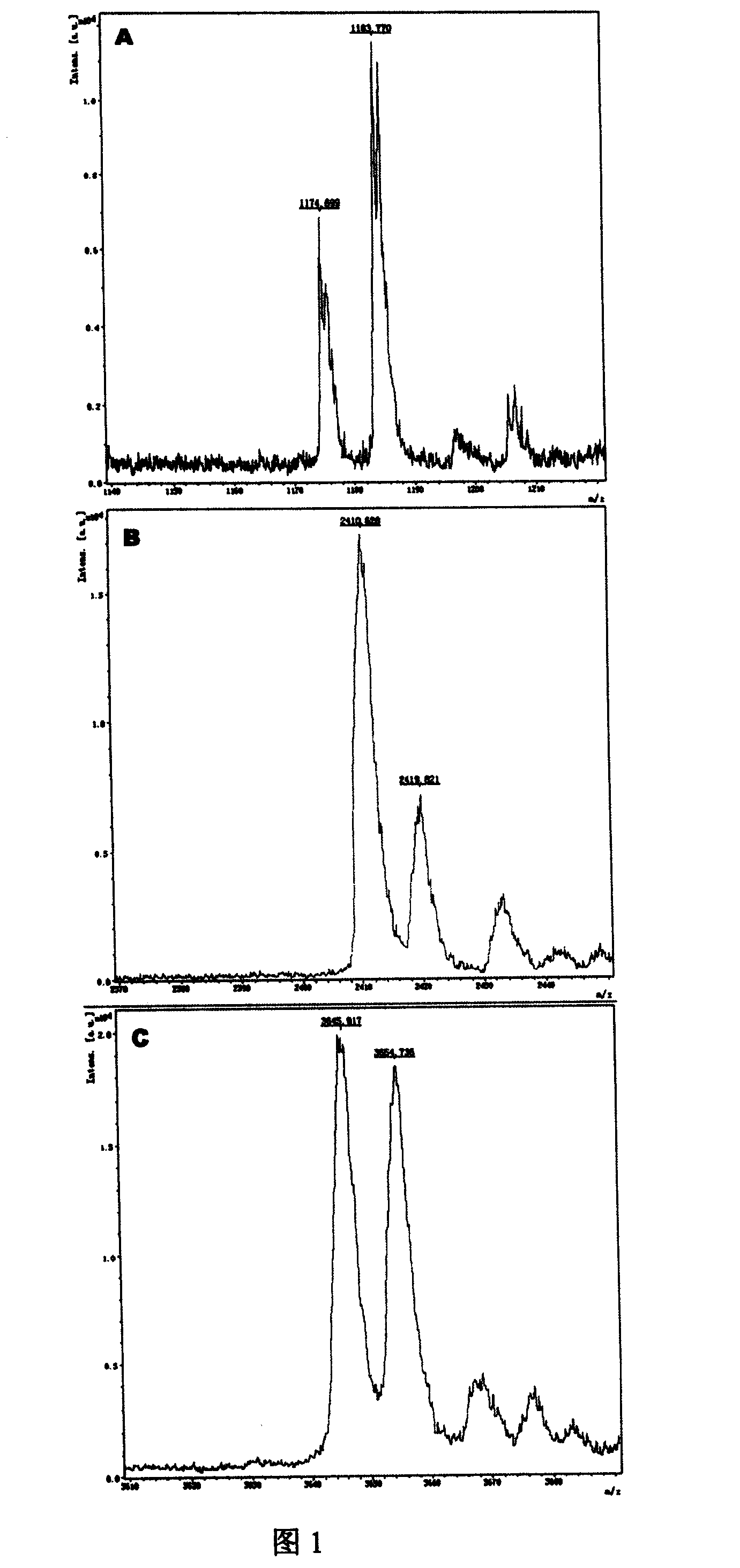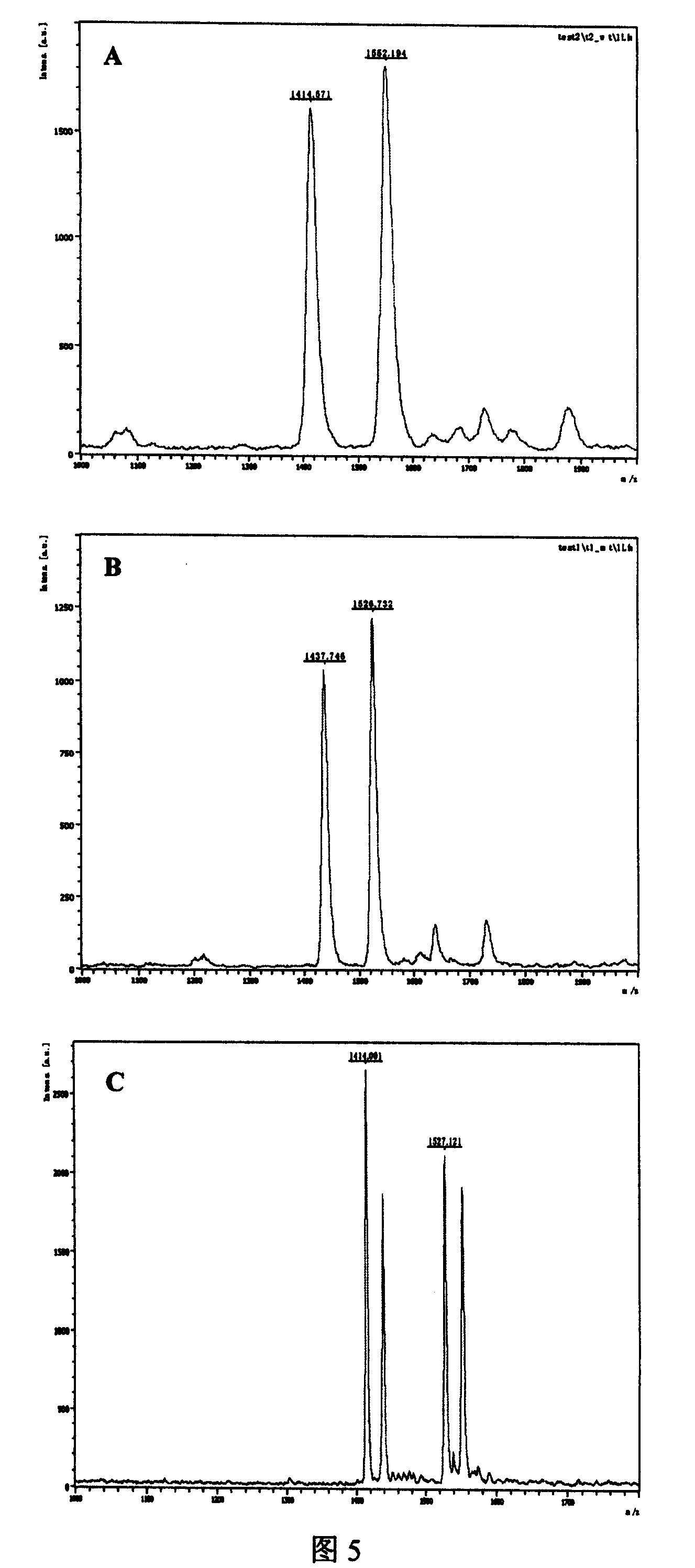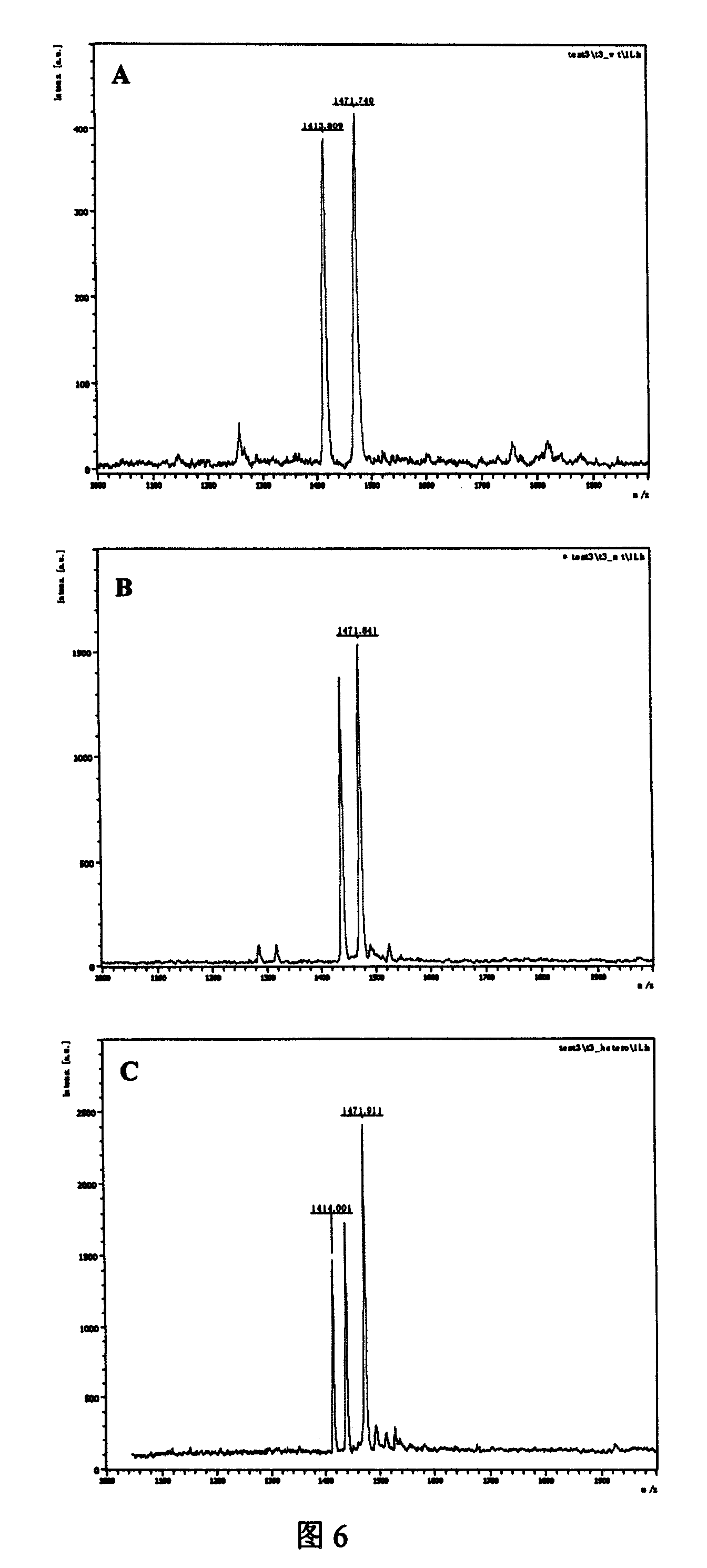Method for testing SNP combining restrictive zyme cutting method and mass spectrometry
A restriction enzyme and mass spectrometry detection technology, which is applied in biochemical equipment and methods, measuring devices, microbial determination/inspection, etc., can solve the problems of insufficient detection resolution and slow pre-processing speed, so as to improve detection efficiency, Save detection time and achieve high resolution
- Summary
- Abstract
- Description
- Claims
- Application Information
AI Technical Summary
Problems solved by technology
Method used
Image
Examples
Embodiment 1
[0048] Embodiment 1: Design and amplify the primer of 669 position SNPs of hepatitis B virus P gene
[0049] Hepatitis B virus (HBV) infection is a serious worldwide health problem, and nearly one million people die from various diseases caused by HBV infection every year. However, for the diagnosed hepatitis B patients, there are multiple SNP mutations in the hepatitis B virus genome in different individuals, which leads to the resistance of patients with the same disease to the same drug. If the SNP markers in hepatitis B patients are studied, the root cause of the differences in the sensitivity of different individuals to the same drug will be revealed, which will help researchers to screen more suitable drugs.
[0050] Among them, the 669th nucleotide of the P gene (NCBI Gene ID: 944565) encoded by the hepatitis B virus genome undergoes a C→A mutation, which changes the encoded amino acid from leucine to methionine (L180M), thereby producing the antiviral drug Lamy Fuding...
Embodiment 2
[0055] Embodiment 2: Amplify the 669 SNP fragments comprising the P gene of hepatitis B virus
[0056] The size of the PCR reaction fragment of the two sets of primers is 55 nucleotides, and contains a 10-nucleotide restriction endonuclease recognition sequence. The PCR reaction system and reaction parameters of two groups of primers are also consistent, and the PCR reaction system is: 10ul system, wherein hepatitis B virus genomic DNA 1.5ul (initial concentration 10ng / ul), each 1ul of forward primer and reverse primer (initial concentration 5pmol / ul). ul), dNTPs 0.8ul (initial concentration 2.5mM each), buffer 1ul (initial concentration 1x, containing Mg 2+ ), HSTaq enzyme 0.05ul (initial concentration 5U / ul), sterile deionized water 4.65ul; the cycle parameters of the PCR reaction are: 95°C for 5min, then cycle 30 times at 95°C for 20s, 56°C for 20s, and 72°C for 20s, Then 72°C for 7min. After the PCR reaction, the copy number of the nucleotide sequence with the SNP site i...
Embodiment 3
[0057] Example 3: Digestion of amplified products with specific restriction enzymes
[0058] After the PCR reaction, a thorough restriction endonuclease reaction was carried out by corresponding restriction endonucleases, and the reaction system and reaction parameters were slightly different among the products of each group of primers.
[0059] PCR product of the first group of primers: 20ul system, wherein PCR product 10ul, enzyme buffer 2ul (initial concentration 10x), MlyI enzyme 0.4ul (initial concentration 10U / ul), sterile deionized water 7.6ul; enzyme digestion reaction The parameters are: 37°C for 40 minutes, 95°C for 20 minutes, and ice-water bath for 20 minutes.
[0060] The PCR product of the second group of primers: 20ul system, wherein PCR product 10ul, enzyme buffer 2ul (initial concentration 10x), HgaI enzyme 2ul (initial concentration 2U / ul), sterile deionized water 6ul; Enzyme digestion reaction parameters are : 37°C for 40 minutes, 65°C for 20 minutes.
[0...
PUM
| Property | Measurement | Unit |
|---|---|---|
| Molecular weight | aaaaa | aaaaa |
Abstract
Description
Claims
Application Information
 Login to View More
Login to View More - R&D
- Intellectual Property
- Life Sciences
- Materials
- Tech Scout
- Unparalleled Data Quality
- Higher Quality Content
- 60% Fewer Hallucinations
Browse by: Latest US Patents, China's latest patents, Technical Efficacy Thesaurus, Application Domain, Technology Topic, Popular Technical Reports.
© 2025 PatSnap. All rights reserved.Legal|Privacy policy|Modern Slavery Act Transparency Statement|Sitemap|About US| Contact US: help@patsnap.com



